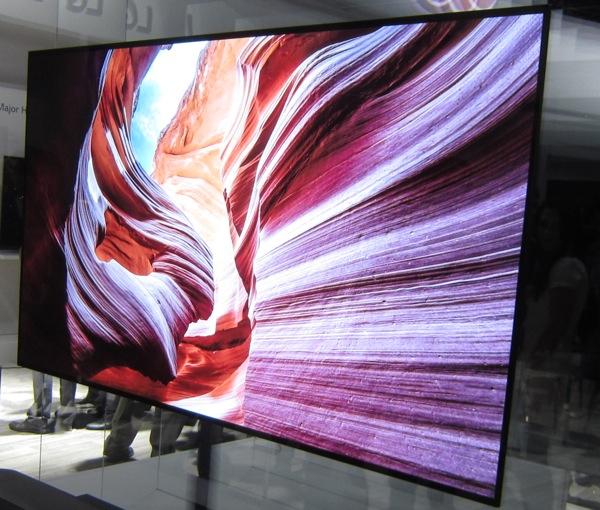UHD by the Numbers

There’s no such thing as a P3 color gamut in the UHD standards, only BT.2020 (also known as Rec.2020). But there is a DCI/P3 color gamut in the video universe (DCI stands for Digital Cinema Initiative), and it’s used in all digitally projected theatrical presentations (which today means virtually all films in theaters).
Because time is money, film studios use the P3 color gamut today on virtually all of their Ultra HD video releases, since video masters in that gamut already exist. And no consumer displays can do significantly better than P3.
Manufacturers have made much noise about P3, as have we in some cases. That’s because full BT.2020 is still unobtanium (apart from a few laser-lit professional projectorsand even then some experts argue against BT.2020, though that’s a different blog). But it’s misleading to imply, even inadvertently, that a specific consumer display or piece of source material produces BT.2020, when in fact none currently do. Info screens from players and displays that indicate what color gamut is on the disc invariably read BT.2020. However, that merely indicates the color volume available on the disc, which today is only partially “filled,” typically up to the level of P3.
Manufacturers often claim a percentage of P3 that their displays achieve, since the percent of BT.2020 would be a much smaller, less impressive number. Even specifying the percentage of P3 can be misleading however. It might have been determined by taking only an optimum (for the specifier) two-dimensional slice of the three-dimensional color volume. It also doesn’t necessarily mean that every color meets that claim. Red and blue might exceed the specified percentage, for example, while green falls well short. But average them together and you get an impressive, promotionally useful number.
Most of today’s UHD Blu-rays are mastered at a peak white level of 1000 nits (292 foot-lamberts), though a few are mastered at 4000 nits. Dolby, which started the whole HDR movement, actually recommends a peak white level goal of 10,000 nits (almost 3000 fL). This isn’t possible today, from any professional or consumer display. If it ever is, I hope you saved those eclipse glasses or, in a pinch, a welder’s hood! Even if achieved only on highlights, which in any case is the whole point of HDR, many viewers might find this level so uncomfortable that it distracts them from the programlike walking out of a dark room into midday, mid-summer sunlight (though real sunlight is a LOT brighter than 10,000 nits). This might affect the way a film can be edited, and thus compromise the whole point of a movie, which should be to tell a compelling story and not just produce wow-level highlights for the audience.
If a set can’t reproduce the full peak level highlights encoded in the source, and most can’t, it must cut them off and, to minimize the impact, “tone map” the information it can’t reproduce into something useful by the display. Ideally tone mapping would not be needed. But as long as most HDR sets can’t reproduce those source peaks, tone mapping must be done. However, there’s no industry standard for it; each display maker establishes a method that accommodates the limitations of its own sets. The highest possible peak white level we’ve seen so far is under 2000 nits on some of the priciest LCD models, and most are well under 1000. OLEDs are lucky to reach 700 nits.
Clipping and tone mapping are special concerns with projectors, which at their best can only reach a fraction of the brightness level of the best flat screen sets, particularly on the larger screens that many fans want. Achieving an honest peak level of even 200 nits (58 fL), at least in our experience to date, would be a cork-popping event at Sony, JVC, Epson, etc. In any case, tone mapping requires that you know the peak brightness available on the screen, and with a projector that varies with projection distance, zoom setting, screen size and gain, and the condition of the projection lamp. And manufacturers can only guess at those parameters when they design their tone mapping algorithm.





























































